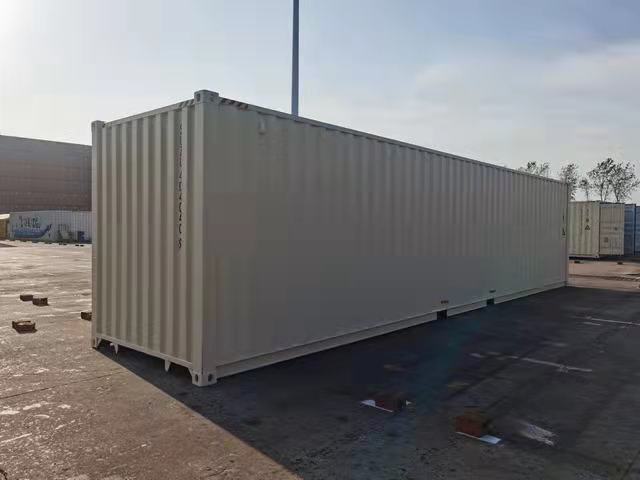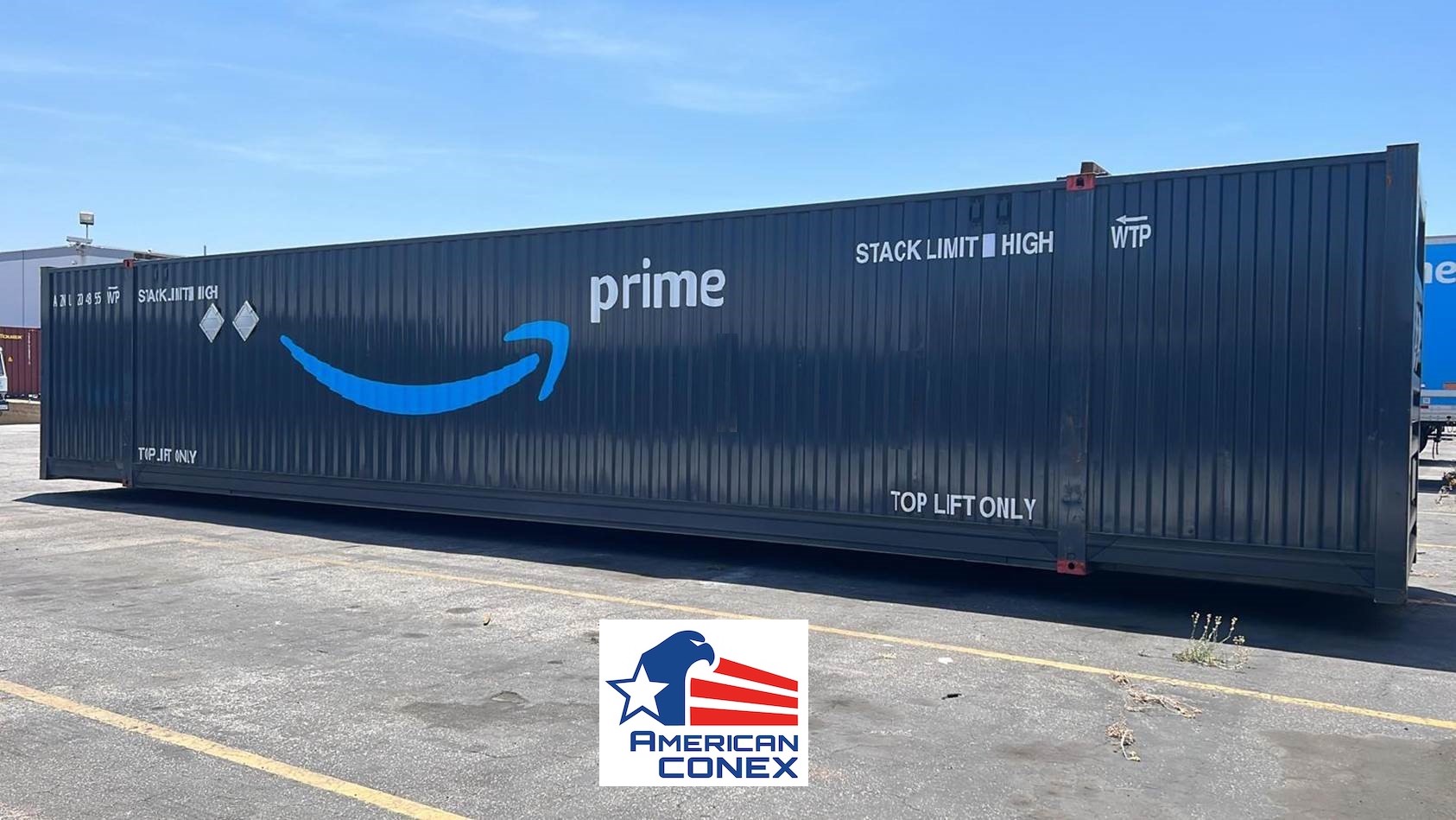The Ultimate Overview to Choosing the Right Delivery Container for Your Requirements
When it comes to selecting the best delivery container, understanding your particular demands is necessary. You'll wish to take into account factors like dimension, kind, and material to ensure you make the best choice. From typical dimensions to specialized alternatives, there's a whole lot to discover. Plus, budgeting for both the container and any kind of alterations can make a big difference. Let's break down the crucial aspects to help you find the perfect fit for your requirements.
Understanding Delivery Container Sizes
When you're selecting a shipping container, understanding the different dimensions readily available is essential for making the appropriate choice. Shipping containers generally can be found in standard lengths of 20 and 40 feet, but you'll likewise find various other dimensions. Recognizing the dimension you require depends on what you prepare to store or transport.If you're moving smaller sized items, a 20-foot container could be suitable, while bigger deliveries often need a 40-foot container. Bear in mind that the elevation can also differ; high dice containers provide additional upright room, which can be beneficial for taller goods - Lease New Shipping Container 40' x 8' x 9’6".Before making a decision, measure your freight, and consider exactly how much space you'll require for filling and discharging. Constantly consider potential future requirements-- selecting a somewhat larger container may conserve you trouble down the line. Eventually, picking the best dimension will enhance effectiveness and guarantee your products are secure throughout transportation
Types of Delivery Containers Available
There are several kinds of delivery containers offered, each designed for specific purposes and freight demands. The conventional dry container is versatile, excellent for general cargo. If you're shipping subject to spoiling products, take into consideration a refrigerated container, which preserves a controlled temperature. For large products, high cube containers use additional elevation, accommodating taller loads.If you require to carry heavy machinery or equipment, flat shelf containers supply a durable base without walls. Open-top containers allow for simple loading of tall cargo, with a detachable tarpaulin covering for security. If you're looking for flexibility, take into consideration a collapsible container that can be conveniently stored when not in use.Lastly, specialized containers like tank containers are utilized for fluids, while vented containers are developed for bulk cargo that needs ventilation. Recognizing your freight kind will aid you choose the ideal container to satisfy your delivery requires effectively.
Product Factors To Consider for Toughness
When picking a delivery container, the material plays a vital function in its durability. You'll wish to weigh the benefits of steel versus aluminum, especially relating to rust resistance. Comprehending these factors can help you make a much more enlightened choice for your delivery requires.
Steel vs. Aluminum Containers
Just how do you pick between steel and light weight aluminum containers for your delivery requires? Begin by thinking about durability. Steel containers are robust and deal exceptional stamina, making them optimal for heavy tons and severe conditions. They stand up to damages from influences and are usually less costly, which can be a significant factor for budget-conscious buyers.On the other hand, light weight aluminum containers are lightweight, which can conserve you on delivery prices. They're less complicated to steer and are a fantastic selection if you need to carry products frequently. Aluminum is normally more pricey and less durable than steel. Evaluate your specific demands meticulously, including weight, cost, and the type of cargo you'll be shipping, to make the appropriate option for your circumstance.
Deterioration Resistance Aspects
Choosing the best material does not simply entail weight and expense; deterioration resistance plays a substantial role in resilience. When picking a delivery container, consider the setting it'll deal with. Steel my latest blog post containers, while strong, can rust if not effectively treated. Search for options with safety finishes or galvanization to enhance their lifespan. Light weight aluminum, on the other hand, provides natural corrosion resistance, making it suitable for coastal areas or humid conditions. Nonetheless, it can be much more costly. Furthermore, evaluate the container's use-- if it'll be exposed to chemicals or harsh weather, focus on products that can endure these problems. Spending in a corrosion-resistant container now can conserve you from costly repairs or substitutes down the line. Pick carefully for lasting benefits.
Alterations and Personalization Options
Delivering containers aren't just for transferring goods; they can be transformed to satisfy your particular needs via various modifications and modification choices. You can convert a standard container right into a cozy office, a momentary retail shop, additional hints or perhaps an individual fitness center. The opportunities are nearly endless.Think regarding including windows, insulation, or ventilation to improve comfort. You could additionally consider electric wiring, plumbing, and even custom shelving to improve performance. If protection's a concern, strengthened locks can give tranquility of mind.For aesthetic appeal, you can repaint the container or include an one-of-a-kind layout to make it stand out. Don't forget flooring options-- whether you want long lasting plywood or something much more innovative, it can elevate the space.Ultimately, tailoring your shipping container to match your requirements can enhance usability and produce an unique atmosphere that reflects your design.
Analyzing Your Transportation Requirements
When it involves utilizing your changed shipping container, comprehending your transport requires is vital. Start by establishing what you'll be delivery-- whether it's hefty tools, retail items, or personal things. Each type of cargo has different needs pertaining to size, weight, and accessibility.Next, consider the distance and setting of transport. Are you delivering in your area, nationally, or internationally? This affects the container's design and functionality. If you're using vehicles, ensure your container fits standard measurements for easy loading and unloading.Additionally, think of transit conditions. Will your things require unique defense from climate or temperature level fluctuations? If so, you could need insulation or ventilation functions in your container.Lastly, analyze just how often you'll be transporting items. Regular deliveries might require an extra durable and versatile container to satisfy recurring needs. By resolving these factors, you'll be well-prepared to choose the appropriate delivery container for your needs.
Budgeting for Your Delivery Container
Setting an allocate your delivery container is crucial for guaranteeing a smooth acquiring procedure. Determine just how much you can manage to spend. Remember that costs can vary significantly based on size, condition, and type. New containers normally set you back much more, yet made use of ones can offer significant savings.Next, take into consideration any kind of added expenses you might incur, such as transport charges, shipment costs, and modifications. If you intend to customize the container, aspect in those expenses also. Research different vendors to compare rates and discover the most effective bargain that satisfies your needs.Don' t fail to remember to consist of any kind of permits or policies that might put on your acquisition and use the container. By clearly describing your budget, you'll be better prepared to make educated decisions, ensuring you obtain the ideal container without damaging the financial institution.
Maintenance and Care for Durability
To assure your delivery container lasts for years, regular maintenance is crucial. Start by inspecting the outside for rust, dents, and damage. If you find any type of concerns, address them quickly to avoid additional damage. Tidy the container occasionally, both in and out, to get rid of dirt, particles, and wetness that can cause corrosion.Ensure the doors secure effectively and oil the joints to avoid rust and sticking. If you're using the container for storage space, take into consideration including ventilation to lower humidity and mold development. For added security, use a rust-inhibiting paint or sealant annually.If your container's situated in a rough atmosphere, like seaside locations, you could need to increase maintenance regularity. Maintain an eye on the floor covering, as well; any indicators of wear ought to be repaired right away. With these easy actions, you'll expand the life of your shipping container considerably.
Often Asked Concerns
Just how Do I Locate a Reliable Delivery Container Supplier?
To locate a trusted delivery container supplier, start by looking into on the internet evaluations, requesting for referrals from close friends or industry contacts, and contrasting rates. Always inspect their credentials and assurance they offer high quality like this containers that meet your demands.

Can I Rental Fee a Delivery Container Rather Than Acquiring?
Yes, you can definitely rent out a delivery container as opposed to getting one. Numerous suppliers use rental options, which can save you money and give versatility if you only need it for a short period.
What Permits Are Required for Container Positioning?

Are Shipping Containers Weatherproof and Ideal for Outdoor Storage Space?
Yes, shipping containers are usually weatherproof, developed to stand up to extreme problems. Their durable construction keeps your items safe and dry, making them ideal for exterior storage. Simply ensure appropriate air flow to avoid dampness buildup inside.
Just how Do I Deliver a Delivery Container Once Acquired?
